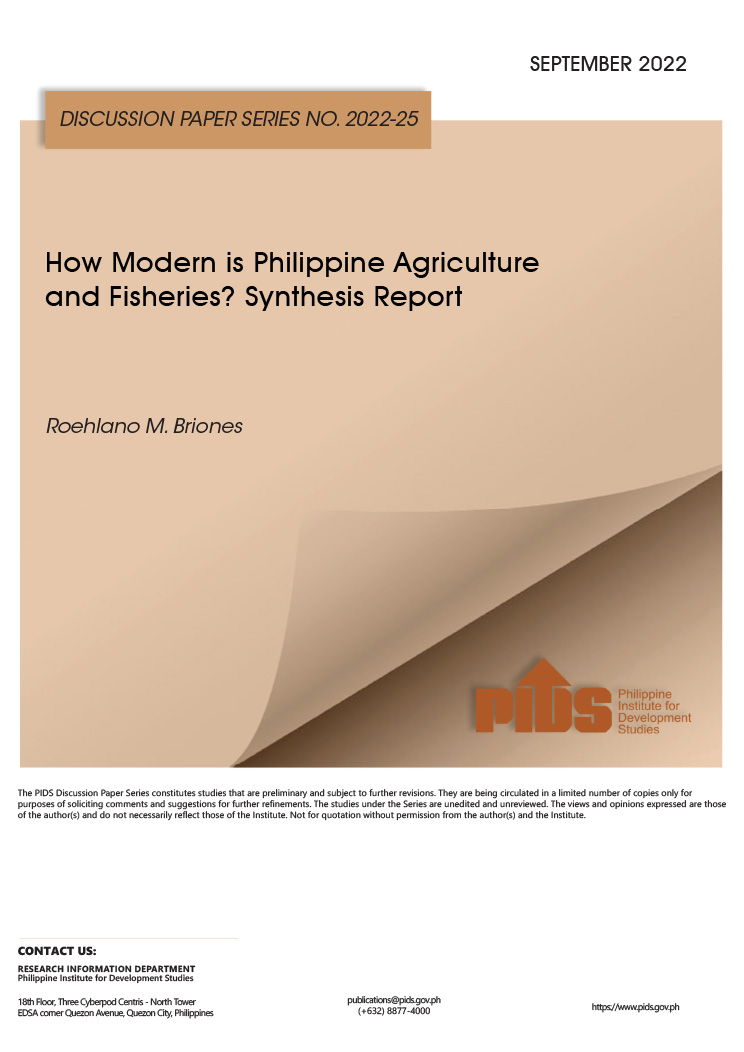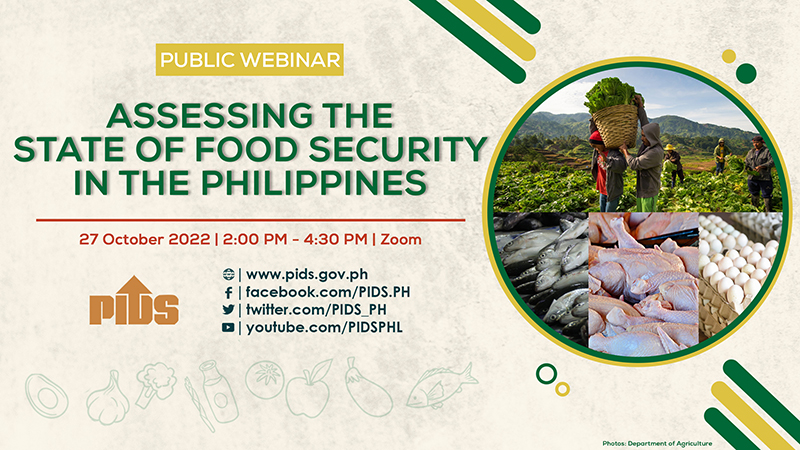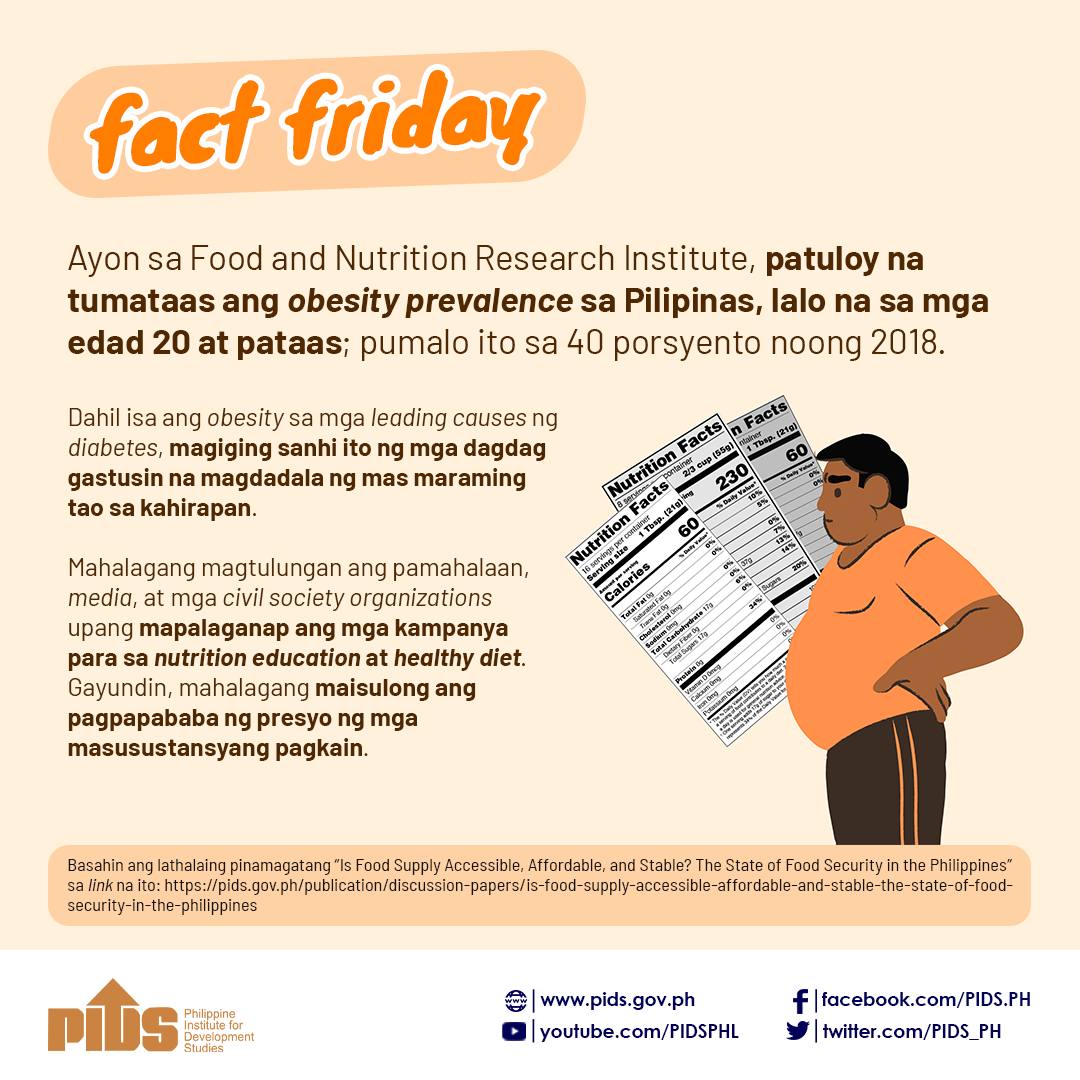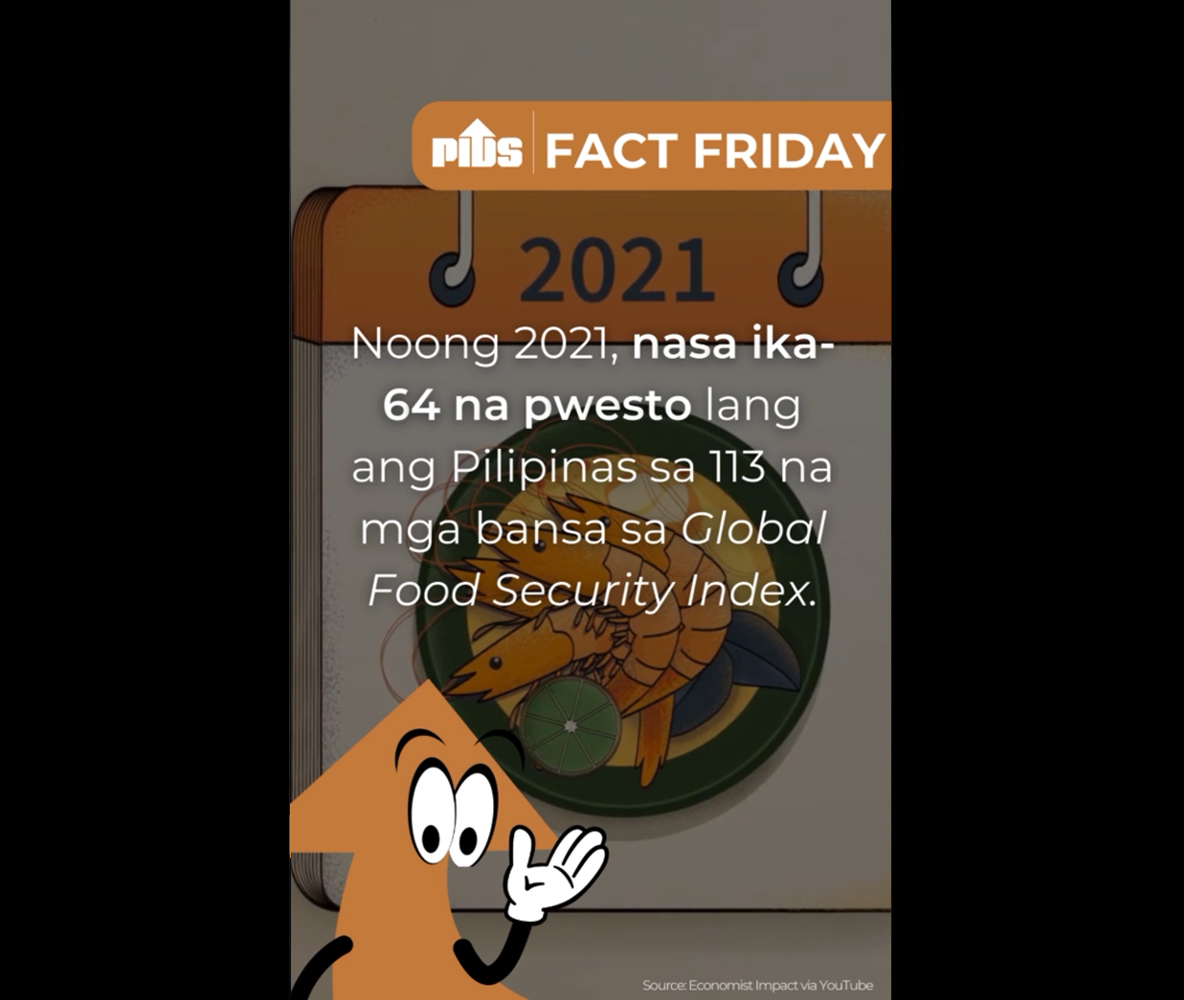
Establishing a sustainable food system requires multisectoral coordination and collaboration to address all challenges simultaneously.
This was the consensus of representatives from the Department of Agriculture (DA), the Department of Science and Technology – Food and Nutrition Research Institute (DOST-FNRI), and the National Nutrition Council (NNC) during a public webinar conducted recently by the Philippine Institute for Development Studies (PIDS).
The webinar featured the study “Is Food Supply Accessible, Affordable, and Stable? The State of Food Security in the Philippines” by PIDS Supervising Research Specialist Ivory Myka Galang. The study analyzed the country’s standing in food availability, accessibility, utilization, and stability, which together form the requirements for attaining food security.
Galang noted that addressing issues in the food system should be seen from a wider perspective. “The food system cannot be isolated from the transport, energy, health, and other systems. So, programs and initiatives must always consider the coordination among agencies handling the different systems,” Galang commented.
Jason Paolo Labrador, science research specialist of the DOST-FNRI Nutrition and Food Research and Development Division and a discussant at the webinar, emphasized that reinforcing key action plans can be done through broad and multilevel strategies of various actors. “All food security requirements must be met simultaneously. This reflects how critical and complex food security is,” he said.
Fellow discussant and DA Policy Research Service senior staff Ian Jomari Panaga added that farmers and fisherfolk could benefit from collaborating with local government units and the private sector. The DA is mobilizing and organizing smallholders to facilitate their empowerment and provide credit support and extension services at the grassroots level.
“Through these initiatives, we can engage our cooperatives to become viable blocks or units of production with higher operational efficiency and improved profits,” Panaga said.
To do this, Galang said continuous data-driven monitoring and evaluation must be conducted. Tools such as the web-based Philippine Food Security Information System help improve the strategy, implementation, and evaluation of food security. The DA and the Food and Agriculture Organization developed the program, but it was discontinued in 2019.
Aside from the government, private and nonprofit organizations, community groups, and individuals can work together to address food insecurity. Ellen Ruth Abella, officer-in-charge of the NNC Nutrition Surveillance Division, stated the need to improve health and nutrition literacy for better food utilization. Mainstreaming health and nutrition literacy in all the elements of food security can help the country’s food system.
Abella noted that the NNC coordinates the Nutrition Promotion Program for Behavior Change, which aims to bring about positive practices that will impact nutrition, focusing on the interaction of interpersonal communication, community communication, mass media, and social media. The program engages with media organizers and practitioners to actively disseminate accurate key nutrition messages.
“Anyone interested, even the youth, can join the movement,” Abella remarked.
Despite consistent economic progress, the Philippines confronts severe socioeconomic inequities. According to the 2022 Human Development Report by the United Nations Development Programme, the country’s malnutrition and hunger prevalence worsened. The Philippines’s human development index (HDI) score slid to 116th out of 191 countries from 113th previously. The HDI ranks countries based on three dimensions of human development: a long and healthy life, knowledge, and a decent standard of living.
Watch the webinar at https://fb.watch/gybvqzluwE and https://youtu.be/4N1nnnZn_rk.
For more videos of PIDS events, go to https://pids.gov.ph/videos. ###












